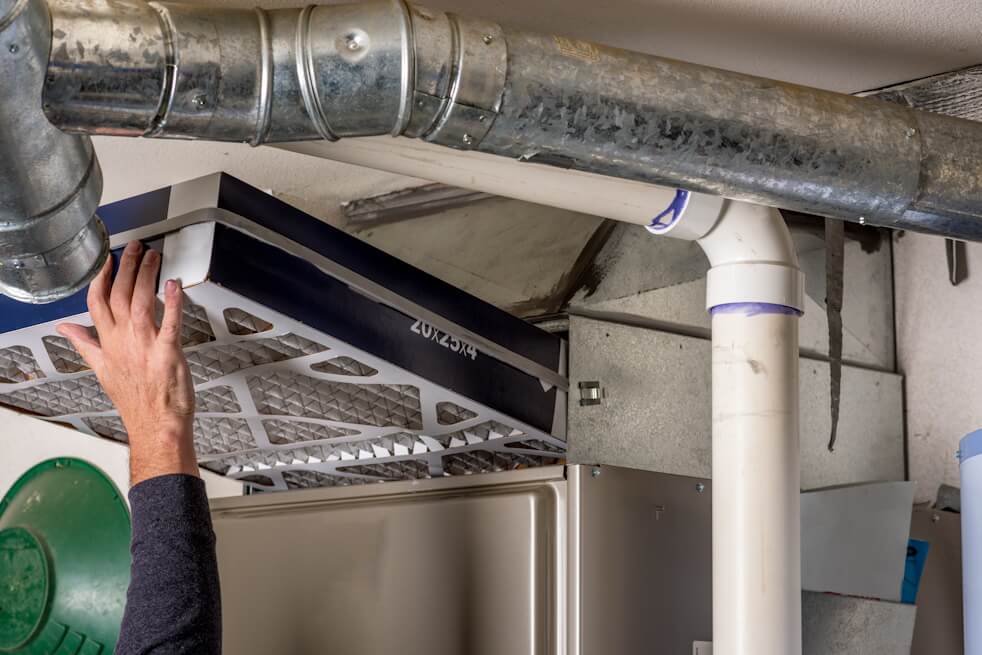Follow This Furnace Tune-Up Checklist Ahead Of Winter, and You Could Lower Your Energy Bills
Furnaces keep your house warm, but you might be shocked when you get your first energy bill after turning your heater on for the season. To avoid a bill that drops your jaw – or to prevent receiving one in the first place – while you keep warm this winter, try these key strategies to help make your furnace more energy efficient
1. Change Your Air Filters
Professional HVAC technicians recommend replacing your air filters every three months if you live alone with no pets, or every month if you live with pets or have multiple people in your household.
Clean air filters allow unrestricted airflow which means your furnace does not have to work harder to circulate warm air around your house. Not only does this keep your indoor air cleaner, but it also reduces the energy your furnace uses.
2. Check and Clean Your Vents
Take a look around your house and make sure there aren’t any obstructed air vents. If vents are clogged or blocked by objects or furniture, your furnace could be working harder to keep your home at a warm temperature.
Remove objects that block the vent including curtains, rugs, toys, lamps, and furniture. Then remove the vent cover and vacuum them out. This simple trick might only take you a small portion of your day, but can make a difference in the heating efficiency of your furnace. Add this task to your twice-yearly furnace tune-up checklist.
3. Fix Any Areas In Your Home Where Heat Escapes
When your home isn’t properly sealed, your furnace works overtime to heat your home, tanking your energy-efficiency. Along with your furnace tune up, check these likely culprits for insulation gaps when preparing for winter:
– Broken windows
– Drafty window frames
– Improper attic ventilation or insulation
– Cracks in walls, ceilings, and around doors
– Cracks in basement walls
– Drafts from your fireplace flue
– Uninsulated electrical outlets
Check for physical gaps, drafts, cold spots, or condensation, as this will usually indicate a problem. Batt insulation, adhesive foam strips, or caulk might be able to help seal some areas where heat escapes. Fixing these problems can improve your energy efficiency, keeping your home warm and your bills down.
4. Reset Your Thermostat and Consider Going Smart
To keep your home comfortable, the US Department of Energy recommends setting your thermostat to 68°F during the day, but dropping the settings by 7 to 10°F at night. Lowering the temperature at night will save energy and be optimal for sleeping.
Switching to a smart thermostat can take these savings one step further. A smart thermostat allows you to control your temperature settings via Wi-Fi using your mobile device. You can manually adjust the temperature even when you aren’t at home, or your smart thermostat will adjust it for you when it learns your habits. ENERGY STAR® estimates that a smart thermostat can save you 10 to 15% on energy costs throughout the year.
5. Book Your Annual Furnace Tune Up
Book a professional furnace tune up ahead of the coldest months can help ensure your system is working properly. It’s also a great time to get ahead of furnace repairs. When your HVAC service provider performs your annual clean and check, they will inspect all components of your heating system, clean all the separate parts, and test the function.
A furnace tune up prepares your system for optimal performance and energy-efficient heating.
6. Sign Up For an HVAC Service Agreement
Most reputable HVAC companies will offer an annual HVAC service agreement that saves you money and keeps your HVAC systems operating smoothly throughout the year. Service agreements include your furnace tune up as part of a yearly deal and for a lower price than two separate checks for heating and cooling.
Regular HVAC maintenance helps your system work optimally and can lower your heating bills by as much as 15%.
7. Consider Switching to an Energy-Efficient Furnace
If your heating bills continue to soar, your furnace isn’t warming the house like it once was, or you’re ready to boost energy-efficiency and lower your overall heating bills, switching to a more energy-efficient model is a great decision.
Request an estimate for a furnace with a high annual fuel utilization efficiency (AFUE). AFUE is a value that measures a furnace’s heat output to energy consumed. The US Department of Energy considers a heating system with an AFUE rating of 90 to 98.5% to be highly energy efficient. An AFUE value of 90% means that 90% of the total the fuel used to power the furnace heats your home, rather than escaping through the chimney, exterior spaces, or lost as sound energy.
Warm Up Your Home and Your Wallet With a Furnace Tune Up For Winter or a New Furnace
To prevent major furnace repairs, get ready for winter with a furnace tune-up from a local expert you can trust. If you find out your HVAC system isn’t as efficient as it could be, request an estimate on new equipment. By being proactive before the worst of winter hits, you can keep your home warm and cozy without interruption.

